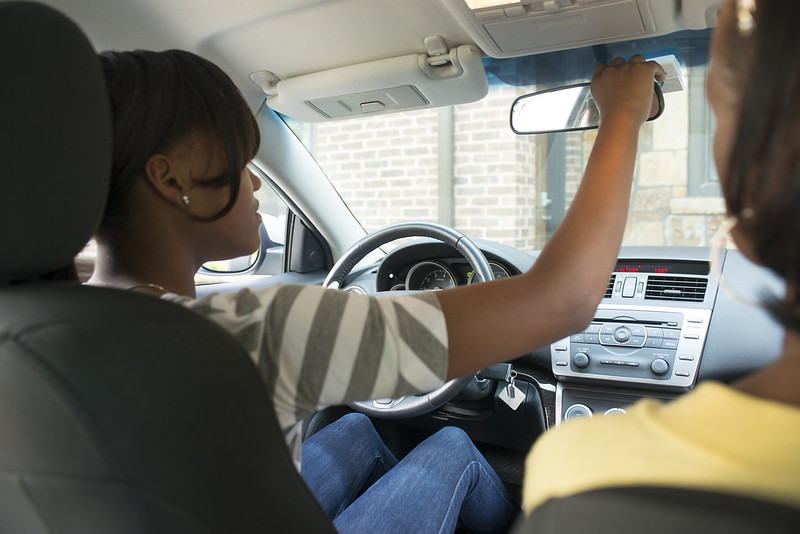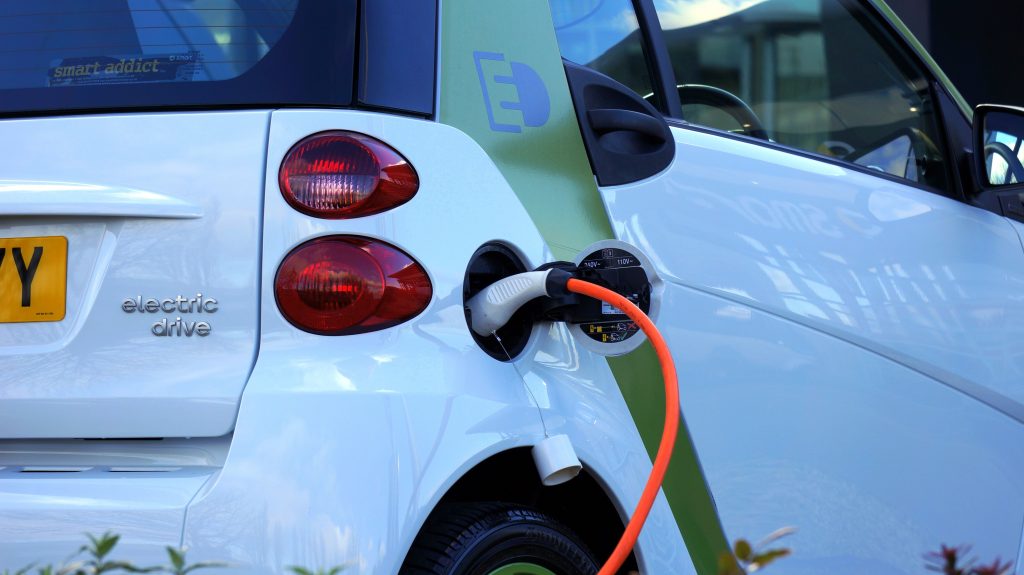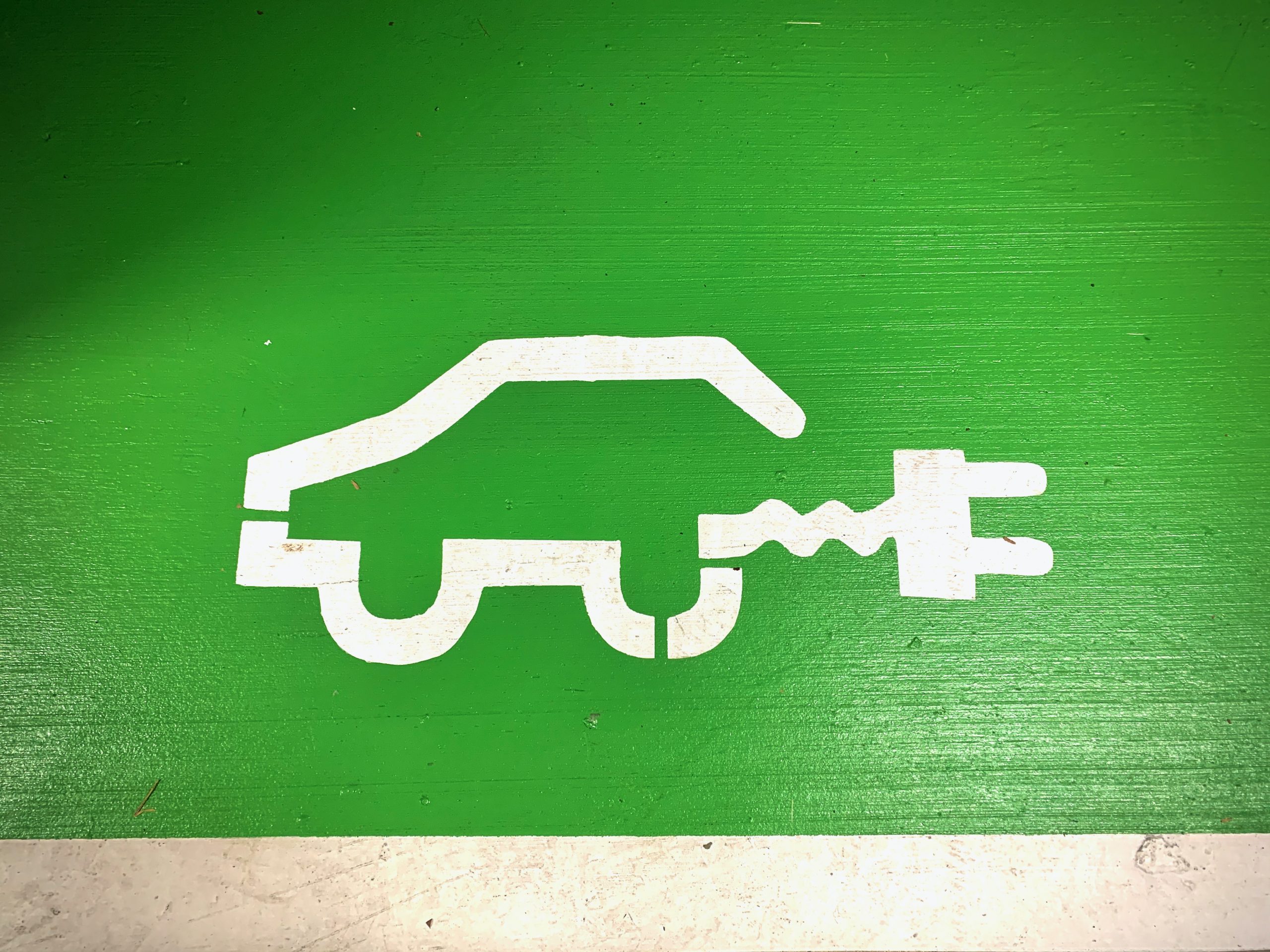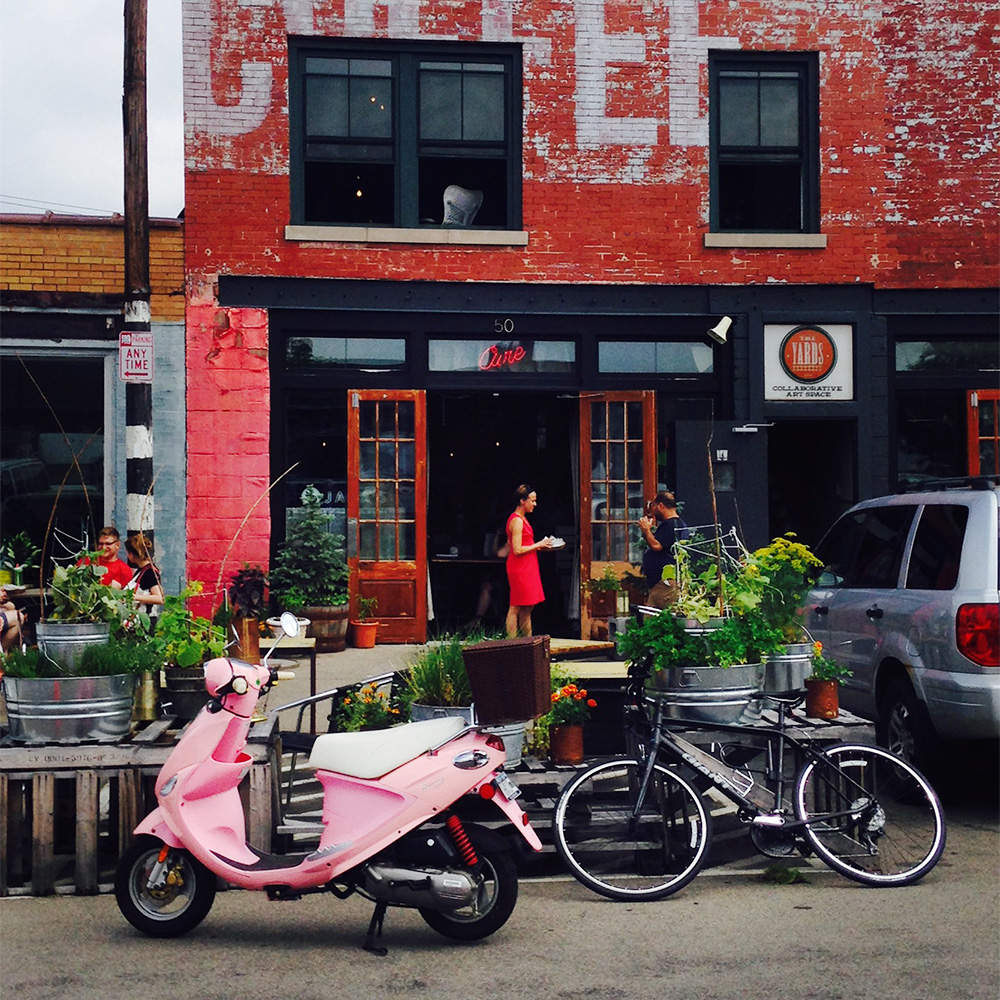Guest blog by Evan Lowenstein, Director of Communications and Membership at the Climate Solutions Accelerator
Remember when you learned how to drive? You learned about the blind spots to the left and right of your vehicle, those spots where another car might be, hidden even from all your mirrors. That there might be things there you aren’t seeing.
There’s another blind spot putting us at risk here in car-centric America: the one that prevents us from thinking beyond the automobile as we strive for climate solutions and a truly sustainable society.

The rise in concern about climate change in society and industry is encouraging, and happening not a second too soon. But the well-intentioned efforts run the risk of falling way short because of our perilously persistent belief that we can achieve a climate-safe, sustainable future simply by running our cars on something besides fossil fuels.
Transportation accounts for 40% of our climate-changing greenhouse gas emissions, and converting vehicles from fossil-fuels to more cleanly-generated electricity surely can reduce those vehicles’ emissions. But the way they are fueled is just one of many environmental, economic, and equity problems caused by our cars — and just one of the problems inherent in our prevailing transportation model and mindset.
Thus, there is an inconvenient truth hidden in our blind spot: as we seek transportation modes and systems that are better for the environment, for the economy, and for equity, electric vehicles are the next-worst option to the fossil-fueled ones.
Why Electric Vehicles Aren’t Enough
The switch to electric cars as a solution to climate change depends simultaneously on a massive transition to renewable energy, such as wind and solar, happening at an unprecedented speed. If we don’t transition to renewables as fast as we transition to electric cars, electric vehicles won’t produce any real progress on climate change. The switch also means a massive increase in demand on our already-strained electric grid; in addition to the cost of putting up that much renewable energy, we then have to upgrade the grid to carry it all.

And electric cars are still cars — machines that produce environmental impacts such as water pollution from tire and brake residues, and leaks of toxic materials from millions upon millions of compromised vehicles; pollution from extraction of materials needed and energy needed to make them; gargantuan fossil-fuel expenditures needed to transport them from manufacturer to individual buyer. In addition, the massive road and storage infrastructure (parking lots) needed to accommodate individual cars as a primary transport choice has titanic environmental impact: polluted runoff, biodiversity loss and roadkill from fractured habitat, etc. Having to maintain all this outsized, inefficient infrastructure forever also creates enormous financial challenges for governments, and prevents resources from being used more wisely.
The Cost of Personal Vehicles
Speaking of roadkill — cars also kill a lot of people too, upwards of 60,000 annually in our country from crashes and illness from fossil-fueled air pollution. And many people killed by cars are low-income and people of color, forced into walking or cycling in car-centric communities without adequate provisions for pedestrians or cyclists; and/or forced into living in places with the worst auto-borne air pollution.

Car-culture also creates and perpetuates more inequity like this. Cars are already expensive to own, maintain, insure, and fuel. Low-income people without the means to own cars are shut out from many needs and opportunities (jobs, education, recreation, culture) that are accessible only by car. In addition, most low-income people rent instead of own their housing, and even if they were able to access electric vehicles, they likely wouldn’t have easy access to charging. If the shift to electric vehicles makes car ownership even more out of reach for low-income people, the equity gap exacerbated by car-culture will grow even wider.
Building a Multi-Modal Future
We must start seeing what’s in the blind spot–the fact that a switch from gas-powered to electric vehicles cannot be the primary push as we strive for sustainability. Instead, we must understand that the best car trip for climate and sustainability is not an electricity-powered car trip, but the absence of a car trip.
Then, we must focus our planning and funding to make it easier for more people to transport themselves by bus, rail, bicycle, and foot. Note that an electric bus or train uses ten to twenty times less electricity per passenger mile than an electric car does — no matter how clean or dirty the electricity supply is, they are always that much better. And even if buses and trains aren’t electrified, they produce less overall impact than electric private vehicles as a whole, simply by transporting more people over less distance. Walking and bicycling for transportation — if done safely using adequate infrastructure provided for it — produces positive health benefits along with the environmental benefits.

Seeing what’s in the blind spot also means developing land and our communities more efficiently so that transit, bike, and pedestrian transportation modes are viable for a lot more people. Community design with this location efficiency in mind will also save energy, land, and natural resources, meaning that planning for car-free lives enables climate solutions well beyond the transportation modes themselves. This location efficiency also makes it more feasible for car sharing and carpooling — putting more people in each car is a super-sensible and affordable climate solution as well.
The hard truth is that climate solutions, sustainability, and equity cannot be achieved solely through intention, but rather through execution. And executing requires plugging all the key facts into our designs of policy and place. We cannot let this big blind spot — an overemphasis on electric cars — run us off the road to our destination: a cool, carbon neutral planet.




